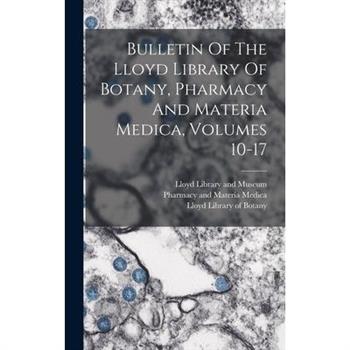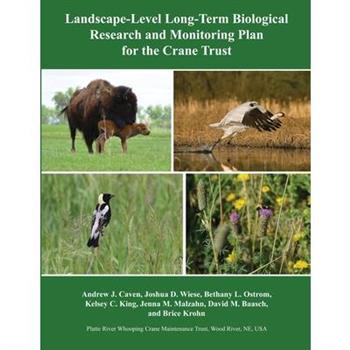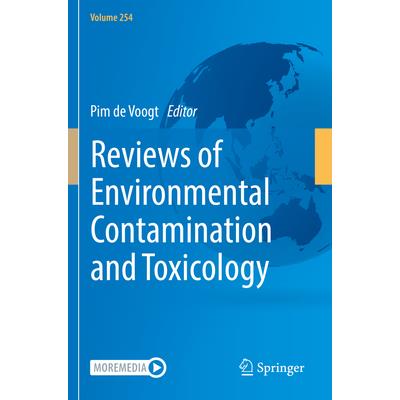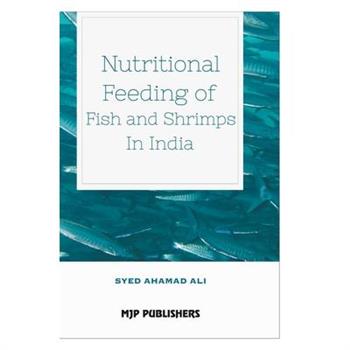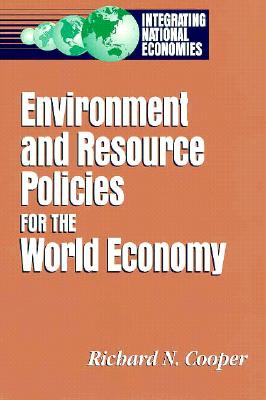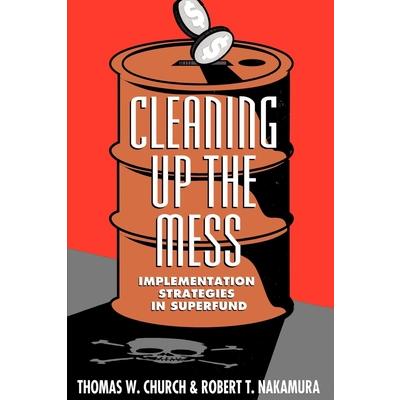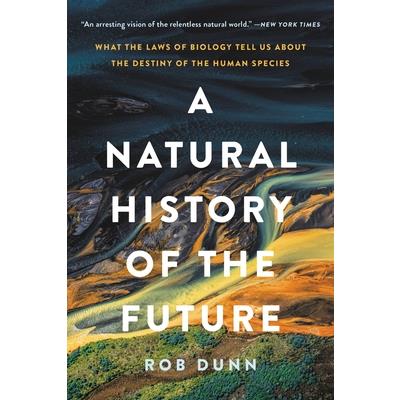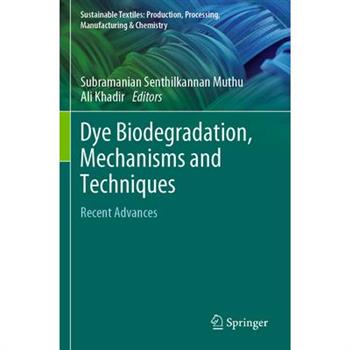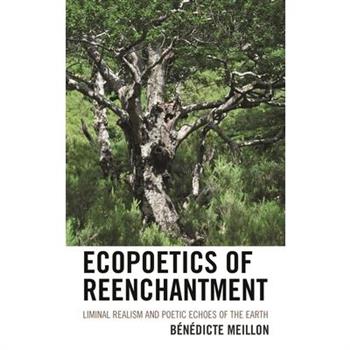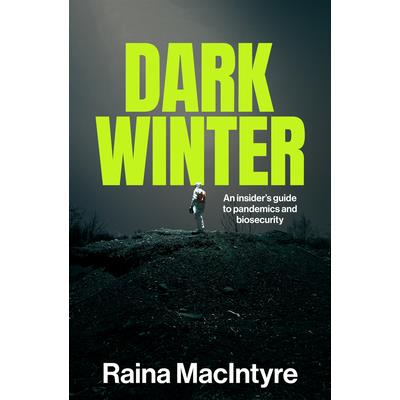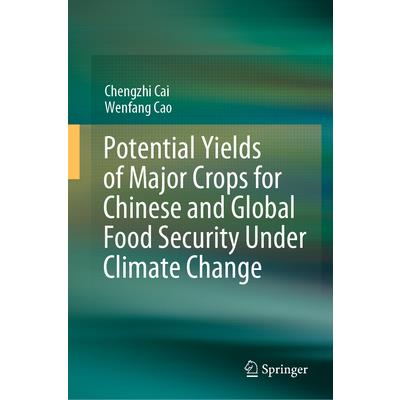Green Recovery with Resilience and High Quality Development
Pithecologia Sive De Simiarum Natura
This work has been selected by scholars as being culturally important, and is part of the knowledge base of civilization as we know it.This work is in the "public domain in the United States of America, and possibly other nations. Within the United States, you may freely copy and distribute this work, as no entity (individual or corporate) has a copyright on the body of the work.Scholars believe, and we concur, that this work is important enough to be preserved, reproduced, and made generally available to the public. We appreciate your support of the preservation process, and thank you for being an important part of keeping this knowledge alive and relevant.
Space, Time, And Deity
This work has been selected by scholars as being culturally important, and is part of the knowledge base of civilization as we know it.This work is in the "public domain in the United States of America, and possibly other nations. Within the United States, you may freely copy and distribute this work, as no entity (individual or corporate) has a copyright on the body of the work.Scholars believe, and we concur, that this work is important enough to be preserved, reproduced, and made generally available to the public. We appreciate your support of the preservation process, and thank you for being an important part of keeping this knowledge alive and relevant.
Introduction to the Science of Botany
This work has been selected by scholars as being culturally important, and is part of the knowledge base of civilization as we know it.This work is in the "public domain in the United States of America, and possibly other nations. Within the United States, you may freely copy and distribute this work, as no entity (individual or corporate) has a copyright on the body of the work.Scholars believe, and we concur, that this work is important enough to be preserved, reproduced, and made generally available to the public. We appreciate your support of the preservation process, and thank you for being an important part of keeping this knowledge alive and relevant.
Bulletin Of The Lloyd Library Of Botany, Pharmacy And Materia Medica, Volumes 10-17
This work has been selected by scholars as being culturally important, and is part of the knowledge base of civilization as we know it.This work is in the "public domain in the United States of America, and possibly other nations. Within the United States, you may freely copy and distribute this work, as no entity (individual or corporate) has a copyright on the body of the work.Scholars believe, and we concur, that this work is important enough to be preserved, reproduced, and made generally available to the public. We appreciate your support of the preservation process, and thank you for being an important part of keeping this knowledge alive and relevant.
Bulletin Of The Lloyd Library Of Botany, Pharmacy And Materia Medica, Volumes 10-17
This work has been selected by scholars as being culturally important, and is part of the knowledge base of civilization as we know it.This work is in the "public domain in the United States of America, and possibly other nations. Within the United States, you may freely copy and distribute this work, as no entity (individual or corporate) has a copyright on the body of the work.Scholars believe, and we concur, that this work is important enough to be preserved, reproduced, and made generally available to the public. We appreciate your support of the preservation process, and thank you for being an important part of keeping this knowledge alive and relevant.
Landscape-Level Long-Term Biological Research and Monitoring Plan for the Crane Trust
Implementing a long-term monitoring program will help us more critically assess the impacts of our management actions to better understand their impacts upon Whooping Cranes, Sandhill Cranes, and the other bird species that pass through and breed in the Big Bend region of the Platte River in Nebraska. It is also our responsibility to publish, in scientific journals and management publications, the results of our research so that we may inform our colleagues in the conservation community and maintain a public record of our research program at the Crane Trust. We need to better understand dynamic ecological change in the long view by implementing an achievable, straight-forward research and monitoring strategy on the Crane Trust's properties. We have an opportunity to collect ecological information on an important mosaic of wet meadows, river channels, sloughs, woodlands, and tallgrass prairies, across a diversity of soil types and biotic communities, under a variety of management regimes. So much incredible research has been done at the Platte River Whooping Crane Maintenance Trust over the last 40 years. One way in which we can continue this legacy is via the continued implementation of our long-term research and monitoring efforts, allowing us to be cooperators in the great task of understanding the "long-scale" ecological changes taking place in the Great Plains, and in our world. This is the future trend of ecological science and land management; we are moving from shorter-term experiments to long-term data collection as a standard practice for understanding the ecological systems we inhabit. -Platte River Whooping Crane Maintenance Trust, Wood River, NE, USA
Research Methodology for Biological science
1. What Is Research, 2. Literature Collection 3. Literature Citation 4. Research Report 5. Research Report-Tables 6. Research Report-Figures 7. Research Report-Formatting and Typing 8. 8.Experimental Designs 9. Microscopy 10. Centrifugation 11. pH and pH Meter 12. Chromatography 13. Electrophoresis 14. Colorimetry and Spectrophotometry 15. Photography 16. Intellectual Property Rights 17. Laboratory Safety
Indian Coelomycetes
This book is written to help mycologists in the study of coelomycetes in as simple a way as possible. It is an introductory identification book designed for those interested in coelomycetes. The author is pleased to introduce the readers to the "Indian Coelomycytes" for teaching and for learning mycology.
Mangrove Magic
An ardent advocate for species protection and conservation of tropical rainforests, Ghazally Ismail tells us of his encounters with the primates in his first memoir entitled Monkey Moment: Encounters in Rainforest Escapadaes. That was in 2021 after hunkering down at home during Covid 19 pandemic. What a true raconteur he proves to be in sharing his amazing experiences in Borneo, the world's third largest island. As a sequel to his previous book, he now brings us to another tropical ecosystem that is undergoing an equally gripping future. He writes about the fascinating mangrove plant and animal species currently under siege. Their continued survival are seriously at risk with the rapid disappearance of the mangroves unprecedented in modern history. Written in simple nontechnical language, he effectively explains the evolution and adaptation of mangrove species in order to thrive in their harsh inhospitable environment. Here too, he again produces beautiful drawings of plants and animals to accompany his well-researched text. Like the rainforests, tropical mangroves are been systematically cleared and drained at alarming rates for land reclamation, housing development and aquaculture. In the process, we are exposing ourselves to the two global calamities lurking at the doorsteps of humanity today, namely global warming and loss of biodiversity. Only the conservation of our rainforests and mangroves could we avert these pending catastrophes. In his book, Ghazally again shares his provocative thoughts on issues he has been grappling with throughout his academic life - the protection of biodiversity and their habitats. He gave intriguing revelations about the biological and behavioral features of mangrove species that are increasingly driven to the cusp of extinction. He effectively reminds us that the rainforests and mangroves are two known nature reserves in the entire universe we must learn to treat with utter respect with stringent and uncompromised guardianship. He speaks with an authority born of decades of university research, teaching and active involvement in organising expeditions into numerous biodiversity-rich tropical ecosystems in Borneo. What distinguishes Ghazally from many of his environmentalist peers is his training in medical immunology and microbiology. Plants and animals are not his forte. He readily admits he does not have all the answers to the vexing ecological questions of our times. But his vast knowledge on tropical plants and wildlife are drawn from his networking and close associations with dozens of world-renowned researchers gravitating to Borneo in the past 40 years during his time there. He has essentially learned from field experts first-hand. This has put him on the vanguard of the conservation movement of the tropical ecosystems. He expressed passion and responsibility towards species and the environment without sanctimony, making this book a winning memoir for anyone interested in tropical ecology. A lively, readable hands-on account of fascinating field experiences that will appeal to a wide audience. "Environmentalism does not just happen," he said,"It is forged through our impassioned sadness looking at the ever-increasing threats to our living world. I hope to inspire a generation that could pause, turn back and rediscover collective sanity in our relationship with planet Earth."
Mangrove Magic
An ardent advocate for species protection and conservation of tropical rainforests, Ghazally Ismail tells us of his encounters with the primates in his first memoir entitled Monkey Moment: Encounters in Rainforest Escapadaes. That was in 2021 after hunkering down at home during Covid 19 pandemic. What a true raconteur he proves to be in sharing his amazing experiences in Borneo, the world's third largest island. As a sequel to his previous book, he now brings us to another tropical ecosystem that is undergoing an equally gripping future. He writes about the fascinating mangrove plant and animal species currently under siege. Their continued survival are seriously at risk with the rapid disappearance of the mangroves unprecedented in modern history. Written in simple nontechnical language, he effectively explains the evolution and adaptation of mangrove species in order to thrive in their harsh inhospitable environment. Here too, he again produces beautiful drawings of plants and animals to accompany his well-researched text. Like the rainforests, tropical mangroves are been systematically cleared and drained at alarming rates for land reclamation, housing development and aquaculture. In the process, we are exposing ourselves to the two global calamities lurking at the doorsteps of humanity today, namely global warming and loss of biodiversity. Only the conservation of our rainforests and mangroves could we avert these pending catastrophes. In his book, Ghazally again shares his provocative thoughts on issues he has been grappling with throughout his academic life - the protection of biodiversity and their habitats. He gave intriguing revelations about the biological and behavioral features of mangrove species that are increasingly driven to the cusp of extinction. He effectively reminds us that the rainforests and mangroves are two known nature reserves in the entire universe we must learn to treat with utter respect with stringent and uncompromised guardianship. He speaks with an authority born of decades of university research, teaching and active involvement in organising expeditions into numerous biodiversity-rich tropical ecosystems in Borneo. What distinguishes Ghazally from many of his environmentalist peers is his training in medical immunology and microbiology. Plants and animals are not his forte. He readily admits he does not have all the answers to the vexing ecological questions of our times. But his vast knowledge on tropical plants and wildlife are drawn from his networking and close associations with dozens of world-renowned researchers gravitating to Borneo in the past 40 years during his time there. He has essentially learned from field experts first-hand. This has put him on the vanguard of the conservation movement of the tropical ecosystems. He expressed passion and responsibility towards species and the environment without sanctimony, making this book a winning memoir for anyone interested in tropical ecology. A lively, readable hands-on account of fascinating field experiences that will appeal to a wide audience. "Environmentalism does not just happen," he said,"It is forged through our impassioned sadness looking at the ever-increasing threats to our living world. I hope to inspire a generation that could pause, turn back and rediscover collective sanity in our relationship with planet Earth."
Viruses 1950. Proceedings of a Conference on the Similarities and Dissimilarities Between Viruses Attacking Animals, Plants, and Bacteria, Respectively. Held at the California Institute of Technology,
This work has been selected by scholars as being culturally important, and is part of the knowledge base of civilization as we know it.This work is in the "public domain in the United States of America, and possibly other nations. Within the United States, you may freely copy and distribute this work, as no entity (individual or corporate) has a copyright on the body of the work.Scholars believe, and we concur, that this work is important enough to be preserved, reproduced, and made generally available to the public. We appreciate your support of the preservation process, and thank you for being an important part of keeping this knowledge alive and relevant.
Viruses 1950. Proceedings of a Conference on the Similarities and Dissimilarities Between Viruses Attacking Animals, Plants, and Bacteria, Respectively. Held at the California Institute of Technology,
This work has been selected by scholars as being culturally important, and is part of the knowledge base of civilization as we know it.This work is in the "public domain in the United States of America, and possibly other nations. Within the United States, you may freely copy and distribute this work, as no entity (individual or corporate) has a copyright on the body of the work.Scholars believe, and we concur, that this work is important enough to be preserved, reproduced, and made generally available to the public. We appreciate your support of the preservation process, and thank you for being an important part of keeping this knowledge alive and relevant.
Biblical Natural Science
This work has been selected by scholars as being culturally important, and is part of the knowledge base of civilization as we know it.This work is in the "public domain in the United States of America, and possibly other nations. Within the United States, you may freely copy and distribute this work, as no entity (individual or corporate) has a copyright on the body of the work.Scholars believe, and we concur, that this work is important enough to be preserved, reproduced, and made generally available to the public. We appreciate your support of the preservation process, and thank you for being an important part of keeping this knowledge alive and relevant.
Connecting the Sustainable Development Goals: The Wef Nexus
This contributed volume offers a state-of-the-art, holistic overview of the employment of a Water-Energy-Food (WEF) Nexus approach to implement the seventeen United Nations Sustainable Development Goals (SDGs), with a geographical focus on applications in different African regions. The book is divided into three sections, each composed of several chapters contributed by experts in their respective fields. Section I introduces the WEF Nexus and its role in the achievement of the 2030 Agenda and the SDGs. It highlights the attempt to connect different spheres of sustainability thanks to the Nexus, taking advantage of the existing interlinkages and interconnections among the Goals. Section II proposes a multi-scale and multi-stakeholder approach to various aspects of the Nexus and reviews existing quantitative tools. This section focuses on the issue of resource control and development aims and spotlights how Nexus dynamics influence the achievement of the SDGs as awhole. Section III applies the WEF Nexus to different African regions, which are balancing a rising population and an economic boom with severe vulnerability in the face of climate change.Chapter "Review of the Economic Impact of Water Availability on Food Security and the Related Ecosystems" is available open access under a Creative Commons Attribution 4.0 International License via link.springer.com.
Reviews of Environmental Contamination and Toxicology Volume 254
Reviews of Environmental Contamination and Toxicology attempts to provide concise, critical reviews of timely advances, philosophy and significant areas of accomplished or needed endeavor in the total field of xenobiotics, in any segment of the environment, as well as toxicological implications.
The Power of Trees
As we witness the daily destruction of forests, a sadness afflicts the roots of the soul. This book by the psychologist and ecologist Michael Pearlman is the first to connect trees' symbolism with the personal meaning of their beauty-and their loss in hurricanes, forest fires, clear-cut timberlands, and wars.Perlman goes beyond the psychological interpretations of trees in myths and fairy tales. Rather, like Studs Terkel, he interviews and reports what actual people think and feel about the trees they know. Their words resonate alongside the trees of mythology, literature, poetry, and psychoanalysis: Wendell Berry, Annie Dillard, Mari Evans, Homer, Langston Hughes, Zora Neale Hurston, C.G. Jung, Aldo Leopold, Carson McCullers, Toni Morrison, Tim O'Brien, Rainer Maria Rilke, Harold Searles, J.R.R. Tolkien, Michel Tournier, and Walt Whitman
The Life and Times of Edward the Bacterium
This book is written for children to read with their parents. It is about the life of a bacterium called Edward. This is the second of my 'science books for children'. In the first book about the adventures of a virus called Ezzy, the life cycle of viruses is explained and their impact on humans. This book attempts to help parents explain bacteria to children. Bacteria, like viruses, are harmful and can cause disease and sometimes death. Like viruses they are very small, and not visible to the naked eye. Unlike viruses, they can also have some benefits in the decomposition of waste and protective effects lining the gut. Some information about bacteria is provided throughout the book and in an appendix at the end there is information about where to find further information. I hope you enjoy reading this book. Rachel
Lifecode #1 Yearly Forecast for 2022 Brahma (Color Edition)
This book is for you if you were born on: Jan 09,18,27; Feb 08, 17,26; Mar 07,16,25; Apr 06,15,24; May 05,14,23; Jun 04,13,22; Jul 03,12,21,30; Aug 02,11,20,29; Sep 01,10,19,28; Oct 09,18,27; Nov 08,17,26; Dec 07,16,25. Just as we all have a unique fingerprint, everyone has a Life Code that comprises his or her equation of life. Nine codes connect us to one another in different ways. While there are the spiritual and scientific laws that question our existence, there are universal codes that can answer our inquiries. When you know these codes, they result in powerful knowledge that can guide our lives to success, peace and prosperity.
Biogeography Lab Manual
Quick and easy exercises: a great way for undergraduate students in biogeography and ecology to practice and learn introductory concepts. With a Pacific Northwest focus that includes eight exercises: Taxonomy, Distribution of life, Succession, Invasion and colonization, Biodiversity patterns, Island biogeography, and Defining bioregions. A self-guided field trip in the Banff and Waterton Lakes area is also included.
Elements of Structural and Systematic Botany
The rapid advances made in the science of botany within the last few years necessitate changes in the text books in use as well as in methods of teaching. Having, in his own experience as a teacher, felt the need of a book different from any now in use, the author has prepared the present volume with a hope that it may serve the purpose for which it is intended; viz., an introduction to the study of botany for use in high schools especially, but sufficiently comprehensive to serve also as a begi
Nutritional Feeding of Fish and Shrimps in India
Chapter I - Importance of Nutrition of Species in Aquaculture, Chapter II - Nutritional Requirements of Finfish, Chapter III - Nutritional Requirements of Crustaceans (Shrimps and Prawns, Lobsters and Crabs), Chapter IV - Broodstock and Larval Nutrition, Chapter V - Feed Ingredients, Chapter VI - Feed Additives, Chapter VII - Feed Formulation An Feed Technology, Chapter VIII - Feeding Management and Sustainability, Chapter IX 0- Biofloc Technology, Chapter X - Aquaponics. Fish and shellfish are
Animal Behaviour
Conwy Lloyd Morgan, Fellow of the Royal Society (6 February 1852 - 6 March 1936) was a British ethologist and psychologist. He is remembered for his theory of emergent evolution, and for the experimental approach to animal psychology now known as Morgan's canon, a principle that played a major role in behaviourism, insisting that higher mental faculties should only be considered as explanations if lower faculties could not explain a behaviour.
Urban Water Demand Management
This open access book highlights knowledge and expertise in Urban Water Demand Management (WDM) in ASEAN through comprehensive literature review and analysis, as well as stakeholder consultations. It documents urban WDM policies, initiatives, and practices that have demonstrated effective implementation outcomes across various contexts and which are expected to be relevant for cities in ASEAN. A WDM typology developed for this book identifies four key WDM measures, namely: water losses, economic instruments, non-price mechanisms, and alternative water reuse systems in the ASEAN context. Case illustrations of their effective implementation in different ASEAN cities are also included.
Environment and Resource Policies for the Integrated World Economy
To whom do the Earth's riches belong--all of mankind, the nations in which those riches are found, or individuals? Why should a relatively small number of Arabs own most of the world's oil reserves? Why should South Africans own most of the world's gold and diamond resources? Or why should the Americans and Canadians own the agriculturally rich Great Plains? Shouldn't these resources and the environment be treated as endowments available to all mankind?Long ago, the international community agreed to a system of national ownership of natural resources, giving states sovereignty over their respective territories. In recent years, however, environmentalists have raised questions about this distribution of property rights with respect to global environmental issues, such as atmospheric disposal of waste gases, preservation of the Earth's genetic material, and the destruction of tropical rain forests. When environmental impacts are global, international action may be warranted to ensure that individual nations are complying with transnational standards.In this book, part of the Brookings Integrating National Economies series, Richard N. Cooper evaluates the need for international policy action in natural resource and environmental management. Using numerous examples, he illustrates the issues that cause conflict in environment and resources policies. Cooper divides the use of natural resources into three categories and examines the rationale for international action in each. He discusses the use of resources not yet subject to national jurisdiction, such as Antarctica, open oceans, and outer space, and analyzes the effects of national action on other nations via both market and environmental externalities.Taking into account the diversity of individual states' circumstances and priorities, Copper concludes that stiff environmental regulations generally are not the best answer to environmental management. He explains that developing countries a
Cleaning Up the Mess
The federal Superfund program for cleaning up America's inactive toxic waste sites is noteworthy not only for its enormous cost - $15.2 billion has been authorized thus far - but also for its unique design. The legislation that created Superfund provided the Environmental Protection Agency with a diverse set of policy tools. Preeminent among them is a civil liability scheme that imposes responsibility for multimillion dollar cleanups on businesses and government units linked - even tangentially - to hazardous waste sites. Armed with this potent policy implement, the agency can order the parties who are legally responsible for the toxic substances at a site to clean it up, with large fines and damages for failure to comply. EPA can also offer conciliatory measures to bring about voluntary, privately financed cleanup; or it can launch a cleanup initially paid for by Superfund and later force the responsible parties to reimburse the government.In this book, Thomas W. Church and Robert T. Nakamura provide the first in-depth study of Superfund operations at hazardous waste sites. They examine six Superfund cleanups, including three regions and both 'hard' and 'easy' sites, to ask 'what works?' Based on detailed case studies, the book describes various strategies that have been applied by government regulators and lawyers and the responses to those different strategies by businesses and local government officials.The authors characterize the implementation strategies used by the EPA as prosecution, accommodation, and public works. They point out that the choice of strategy involves setting priorities among Superfund's competing objectives. They conclude that the best implementation strategy is one that considers the context of each site and the particular priorities in each case. Looking toward the reauthorization of Superfund, they also offer recommendations for improvements in the organization of the program and discuss proposals for change in its
The Promise and Peril of Environmental Justice
Are we environmentally victimizing, perhaps even poisoning, our minority and low-income citizens? Proponents of ""environmental justice"" assert that environmental decisionmaking pays insufficient heed to the interests of those citizens, disproportionately burdens their neighborhoods with hazardous toxins, and perpetuates an insidious ""environmental racism."" In the first book-length critique of environmental justice advocacy, Christopher Foreman argues that it has cleared significant political hurdles but displays substantial limitations and drawbacks. Activism has yielded a presidential executive order, management reforms at the Environmental Protection Agency, and numerous local political victories. Yet the environmental justice movement is structurally and ideologically unable to generate a focused policy agenda. The movement refuses to confront the need for environmental priorities and trade-offs, politically inconvenient facts about environmental health risks, and the limits of an environmental approach to social justice. Ironically, environmental justice advocacy may also threaten the very constituencies it aspires to serve--distracting attention from the many significant health hazards challenging minority and disadvantaged populations. Foreman recommends specific institutional reforms intended to recast the national dialogue about the stakes of these populations in environmental protection.
Reviews of Environmental Contamination and Toxicology Volume 256
Reviews of Environmental Contamination and Toxicology attempts to provide concise, critical reviews of timely advances, philosophy and significant areas of accomplished or needed endeavor in the total field of xenobiotics, in any segment of the environment, as well as toxicological implications.
Environmental Sustainability in Building Design and Construction
Chapter 1-Introduction.- Chapter 2-National and international developments.- Chapter 3-Climate change and built environment.- Chapter 4-Energy and carbon emission.- Chapter 5-Materials and water.- Chapter 6-Sustainable waste management.- Chapter 7-Resilience and adaptation in buildings.- Chapter 8-Sustainable building design.- Chapter 9-Urban sustainable developments.- Chapter 10-Regional sustainable developments.
A Natural History of the Future
"An arresting vision of this relentless natural world" (New York Times) by a leading ecologist, who urges us to heed nature's iron laws Our species has amassed unprecedented knowledge of nature, which we have tried to use to seize control of life and bend the planet to our will. In  A Natural History of the Future, biologist Rob Dunn argues that such efforts are futile. We may see ourselves as life's overlords, but we are instead at its mercy. In the evolution of antibiotic resistance, the power of natural selection to create biodiversity, and even the surprising life of the London Underground, Dunn finds laws of life that no human activity can annul. When we create artificial islands of crops, dump toxic waste, or build communities, we provide new materials for old laws to shape. Life's future flourishing is not in question. Ours is. As ambitious as Edward O. Wilson's Sociobiology and as timely as Elizabeth Kolbert's The Sixth Extinction, A Natural History of the Future sets a new standard for understanding the diversity and destiny of life itself.
Dye Biodegradation, Mechanisms and Techniques
An enormous amount of synthetic dyes is used annually in the textile, leather, plastics, paper, and dye industries due to their coloring properties. Although dyes give color to materials, they are prone to increase the level of pollution in the environment. The colored wastewater produced in industrial sectors is released into water bodies, posing threats to the ecosystem. To reduce the adverse effects of dyes in the environment, it is necessary to implement feasible and cost-effective strategies. '"Dye Biodegradation Mechanisms and Techniques - Recent Advances'' provides fundamental principles and pathways of bio-based mechanisms in dye removal. This edition firstly discusses dye classification and pollution, then concentrates on the application of fungi, mesophilic bacteria, microflora, and enzymes in dye degradation. This book also highlights the performance of sequential batch reactor systems, moving bed biofilm reactors, and hybrid bioreactors for dye biodegradation​
Handloom Sustainability and Culture
This third of the three volume series highlights the intricate relationship in the handloom industry between its culture and the various areas of sustainability. While there have been major disruptions in this age old industry, this volume presents the design, development and environmental aspects to keep the industry moving ahead. The book contains seven chapters written by leading experts in the areas and discusses means to revive some of the cultures that are on the verge of closing/shutting down.
Inorganic-Organic Composites for Water and Wastewater Treatment
Wastewater Treatment Technologies Organic-Inorganic Polymer Hybrids for Water and Wastewater Treatment Hydroxyapatite-based materials for environmental remediation Sequestration of Heavy Metal Pollutants by Fe3O4-based Composites Zeolite for Treatment of Distillery Wastewater in Fluidized Bed systems Photodegradation of emerging pollutants using catalysts supported in organic and 3 inorganic composite materials Agricultural wastes utilization in water purification Mesoporous Materials for adsorption of Heavy Metals from Wastewater Role of Water/Wastewater/Industrial treatment plants sludge in Pollutant Removal​
Diversity of Coral-Associated Fauna II
Coral reefs are one of the most diverse types of ecosystems on Earth and one of the richest in terms of species interactions. This Special Issue aims to elucidate the hidden diversity of coral reefs through the description of new associations involving coral reef framework taxa.
Blockchain Technologies for Sustainability
This book highlights the applications of blockchain technologies to foster sustainable development in different fields. The concept of Sustainability has grown widespread in today's context and there are many requirements to achieve Sustainability in any industrial sector including mapping, tracing the supply chain to ensure sustainable supply chain management. Reliable and transparent, efficient data is one of the key requirements for Sustainability in today's advanced industrial context. Achievement of Sustainability objectives in this advanced era demands various technological advancements such as Blockchain technologies. The core competencies of blockchain technology namely transparency, data auditability, privacy, value transfer, and process efficiency and automation are very much essential for achieving the multifold objectives under sustainability.​
Sustainable Production and Applications of Waterborne Polyurethanes
This edited book compiles all category viewpoints in waterborne polyurethanes (WPUs) dispersions, composites, characterizing techniques, and allied applications such as coatings, adhesives, sealants, anticorrosive, flame-retardant, and biomedical applications. The book brings together panels of highly accomplished experts in the field of advanced polymers for versatile applications. It encompasses basic studies and addresses topics of novel issues which cover all the aspects in one place. The book is an invaluable guide to newcomers, research scholars, professors, and R&D industrial experts working in the field of polyurethane chemistry. Polyurethanes are excellent materials in coating technology owing to their chemical resistance, toughness, abrasion resistance, and mechanical stability. However, polyurethane dispersion contains volatile organic compounds (VOCs) and hazardous air pollutants (HAPs) which are harmful to the environment. Hence, green chemistry research focuses on discovery of waterborne polyurethanes (WPUs) and pay attention. WPUs have fascinated growing interest in wide range of industrial and commercial applications.
Ethics and Sustainable Agriculture
​Preface1. Introduction2. Ethics structure and goals3. The emergence of ecological awareness4. Development of ecological awareness4.1 The emergence of ecosystem theory4.1.1 The ecosystem concept 4.2 The establishment of the ecosystem theory4.2.1 Research and education4.2.2 International policy and ecological economics4.3 Ethics of sustainable development4.3.1 Natural capital, ecosystem services and ecological footprint4.3.2 The role of education5. Agriculture and sustainable development5.1 Agroecosystem epistemology and ontology5.1.1 Energetics5.1.2 Matter cycling5.1.3 Biodiversity6. Sustainable agriculture6.1 Site-specificity and tradition6.1.1 Domestication and adaptation6.1.2 Terracing for ecosystem domestication6.2 Sustainable agriculture as a turning point of the human predicament6.3 Agroecology as a transdisciplinary field of cooperation6.4 Ecological intensification principles and practices6.4.1 Ecological intensification through planned biodiversity6.4.2 Ecological intensification: the role of hedgerows6.4.3 Valuing the performances of agroecosystem ecological intensification6.5 Institutional patterns of agriculture ecological intensification in Europe: the role of Universities6.5.1 Indicators of ecological intensification in contrasting farming systems6.5.2 Ecological intensification in animal husbandry6.5.3 Ecological intensification of human diet6.6 Ecological intensification in theology of creation and food ethics7. ConclusionsReferences Index
Ecopoetics of Reenchantment
Ecopoetics of Reenchantment: Liminal Realism and Poetic Echoes of the Earth tackles the reenchantment process at work in a part of contemporary ecoliterature that is marked by the resurfacing of the song of the earth topos and of Gaia images. Focusing on the postmodernist braiding of various indigenous and ecofeminist ontologies, close readings of the animistic and totemic dimensions of the stories at hand lead to the theorizing of liminal realism--a mode that shares much with magical realism but that is approached through an ecopoetic lens, specifically working an interspecies kind of magic, situating readers in-between human and other-than-human worlds. This book promotes a worldview based on relationships of reciprocity and symbiosis. It restores our capacity for wonder together with our sensitive intelligence. Liminal realism adopts a stance in-between scientific, mythical, and poetic worldviews as it calls attention to the soundscapes, odorscapes, feelscapes, and landscapes of the world. This monograph offers an original transdisciplinary and cross-Atlantic take on ecopoetics as it straddles the two academic worlds and sparks a conversation between artworks, theories, and studies emerging from the English-speaking world as well as from Francophone contexts.Entangling the materiality of language back within the flesh of the world, this book and the texts under study provide insight into the fundamentally sympoietic dimension of ecopoiesis.
Visions and Strategies for a Sustainable Economy
The multidisciplinary edited book Visions and Strategies for a Sustainable Economy: Theoretical and Policy Alternatives provides a thorough examination - at the theoretical and, especially, policy levels - of a number of key topics related to a sustainable economy and a better society. With important contributions by distinguished academics, the book presents alternative views, provides an assessment of contemporary realities in an era of ecological emergency, and offers visions, strategies, and realistic policies towards a better economy and society while paying special attention to a "green new deal" for different areas.
Freshwater Mycology
Freshwater Mycology: Perspectives of Fungal Dynamics in Freshwater Ecosystems presents chapters from expert contributors around the world. Through the contributed chapters, the contributors explore the perspectives of fungal dynamics in freshwater ecosystems, especially their diversity, distribution, functioning and role, biotransformation and bioprospecting potential, methodical advancements and metagenomic insights. Written with aquatic ecologists in mind, this book provides information on oceanic, estuarine and freshwater ecosystems not currently well understood and identifies new questions and answers about the roles of mycology in aquatic ecosystems. This topic is becoming an increasingly important area to understand due to the increasing global transports of microbes due to climate change and human actions. This is leading to a rapid loss of healthy freshwater ecosystems, the grave problem of antibiotic resistance, and the rarity of qualified mycology taxonomists and molecular systematicians.
Integrated Surface Water and Groundwater Analysis
Comprehensive understanding of surface water and groundwater interaction is essential for effective water resources management. Groundwater and surface water are closely connected components that constantly interact with each other within the Earth's hydrologic cycle. Many studies utilized observations to explain the surface water and groundwater interactions by carefully analyzing the behavior of surface water features (streams, lakes, reservoirs, wetlands, and estuaries) and the related aquifer environments. However, unlike visible surface water, groundwater, an invisible water resource, is not easy to measure or quantify directly. Nevertheless, demand for groundwater that is highly resilient to climate change is growing rapidly. Furthermore, groundwater is the prime source for drinking water supply and irrigation, and hence critical to global food security. Groundwater needs to be managed wisely, protected, and especially sustainably used. However, this task has become a challenge to many hydrologic systems in arid to even humid regions because of added stress caused by changing environment, climate, land use, population growth, etc. In this issue, the editors present contributions on various research areas such as the integrated surface water and groundwater analysis, sustainable management of groundwater, and the interaction between surface water and groundwater. Methodologies, strategies, case studies as well as quantitative techniques for dealing with combined surface water and groundwater management are of interest for this issue.
Dark Winter
A SWEEPING JOURNEY THROUGH THE PAST, PRESENT AND FUTURE OF PANDEMICS AND BIOSECURITY.In Dark Winter, world-leading epidemiologist and biosecurity expert Raina MacIntyre provides insights into historical biological attacks, lab accidents and epidemics, and the COVID-19 pandemic. She reveals a recurrent theme of denial, silence and cover-up around unnatural epidemics and the powerful vested interests at play. Using the lens of history, MacIntyre also provides a glimpse into new frontiers of biosecurity. Dark Winter outlines quantum advances in genetic engineering and synthetic biology, and a future where human genome editing and resurrection of extinct viruses might be the norm. MacIntyre argues that the solution to the existential threat we face from biotechnology will not come from scientists, but from the community having a voice in the future of the planet and humanity.'Here is what we all need - clear evidence about COVID-19, its origins, treatment, and consequences. Professor MacIntyre's conclusions are often shocking, but her only bias is in favour of the empirical truth.' - Alison Broinowski
Assessment of Climate Change Impacts on Water Quantity and Quality at Small Scale Watersheds
This book was inspired by the Hydrology-H030 Session of the 2019 AGU (America Geophysical Union) Fall Meeting. In recent years, simulating potential future vulnerability and sustainability of water resources due to climate change are mainly focused on global and regional scale watersheds by using climate change scenarios. These scenarios may have low resolution and may not be accurate for local watersheds. This book addresses the impacts of climate change upon water quantity and quality at small scale watersheds. Emphases are on climate-induced water resource vulnerabilities (e.g., flood, drought, groundwater depletion, evapotranspiration, and water pollution) and methodologies (e.g., computer modeling, field measurement, and management practice) employed to mitigation and adapt climate change impacts on water resources. Application implications to local water resource management are also discussed in this book.
Circular Economy
This book highlights the notion of Circular Economy under the umbrella of Sustainability because of the widespread momentum it is gaining. Today the whole world is certainly in emergent need of an alternative system to traditional economy which is linear, i.e. make, use and dispose to get rid-off the waste and very important to ensure continuous use of resources, which is possible by the advent of circular economy. A circular economy aims to utilize the resources in use for as long as possible, extract the maximum value from them during use, then recover and regenerate products and materials at the end of each service life vis-?-vis traditional linear model. This book discusses circular economy in terms of assessment with various case studies.
Forests as Nature-Based Solutions
The concept of Nature-based Solutions (NbS) is becoming increasingly relevant in international and European policy frameworks. In March 2022, the fifth session of the United Nations Assembly for the Environment (UNEA-5) adopted a formal "Resolution on Nature-based Solutions NbS for Supporting Sustainable Development", in which an agreed definition of NbS was given, recognizing their important role in the global response to climate change and its social, economic, and environmental effects. Forest ecosystems, including natural forests, managed forests, agroforestry systems, and urban and peri-urban forests, can be considered as multifunctional NbS, delivering key ecosystem services to people and supporting biodiversity. However, for the effective implementation and mainstreaming of forests as NbS, several research gaps still need to be addressed.This collection of papers presents relevant results from scientific researchers about the ecosystem services provided by forests in natural and urban contexts, encompassing not only providing services, but also regulation and maintenance services, such as carbon and air pollution sink, as well as recreational services. The impacts of environmental changes on forest multifunctionality and services provision are also investigated. Case studies for monetary valuation, willingness to pay for ecosystem services, and cost/benefit analyses are presented. The potential trade-offs and synergies between services, which might result from different stakeholders' perspective and management strategies, are identified and critically discussed, adopting a science-policy interface approach.
Potential Yields of Major Crops for Chinese and Global Food Security Under Climate Change
This book analyzes potential yields of six major food crops - rice, wheat, maize, potato, soybean and rapeseed worldwide using both qualitative and quantitative approaches to study both China's and global food security under climate change. Firstly, it reviews previous studies on potential yields of rice, wheat, maize, potato, soybean and rapeseed worldwide to provide a detailed information of studying on China's and global food security based on the product's supply and demand of these crops. Secondly, average and top (national) yields of rice, wheat, maize, potato, soybean and rapeseed since 1961 on global scale are employed to analyze their temporal and spatial variation trends and potential limits. Thirdly, the effects of global warming in climate change on both average and top yields of rice, wheat, maize, potato, soybean and rapeseed since 1961 at global level are analyzed using regression model, and their differences between average and top yields among these crops are identified and compared. Fourthly, the yields and per capita quantity of rice, wheat, maize, potato, soybean and rapeseed in major producer-countries and the world are analyzed to assess the situation and trend of international trade for the products of these crops, respectively.Fifthly, potential yields of rice, wheat, maize, potato, soybean and rapeseed worldwide by 2030 are projected using both trend-regressed models and ARIMA models to estimate the per capita quantity of these crops based on the projection of world population and assess the status of Chinese and global food security in that future. Finally, it provides policy implications and advice on food security for China and the world directing food production by 2030 under climate change.









